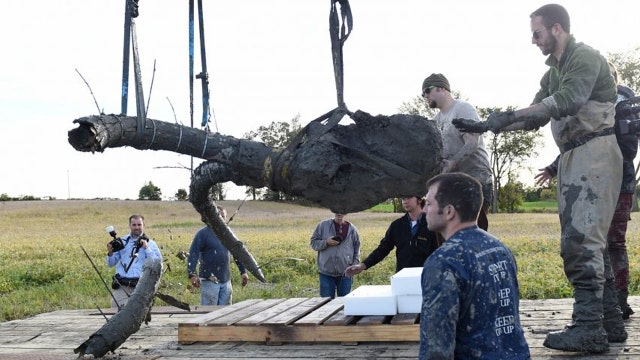Michigan farmer unearths rare mammoth fossil in wheat field
The bones are believed to be 15,000 years old
A year after a farmer's chance discovery, the University of Michigan will publicly display bones from a mammoth that lived more than 10,000 years ago.
The exhibit opens Nov. 5 at the university's Museum of Natural History. Scientists aren't done yet: The scientists plan to return to a Washtenaw County farm for another dig in November.
"What's so interesting about the Bristle site is that there's a mammoth with evidence of human association at a very early date—well before Clovis times," University of Michigan paleontologist Daniel Fisher, who is overseeing the analysis of the remains, said in a statement from the university.
Jim Bristle, a farmer in Lima Township, discovered bones while installing a drain pipe in his soybean field. He called the University of Michigan, and experts recovered roughly 40 percent of the mammoth's skeletal mass, including a skull with teeth and tusks.
"I didn't realize how big this was going to be, how important it would be to a lot of people. It's still overwhelming to me," Bristle said. "Any inconvenience to us is a small price to pay for what we may learn. Who am I, in the whole scheme of things, to stand in the way of learning more about our past?"
The bones were just 10 feet below the surface. The mammoth may have been a hybrid, between a woolly mammoth and a Columbian mammoth.
At the exhibition, guests will be able to closely examine some of the mammoth bones by manipulating 3-D digital models on a touch-screen monitor. Videos from the Oct. 2015 dig will be played-- along with a life-size mammoth silhouette.
The Associated Press contributed to this report.





















